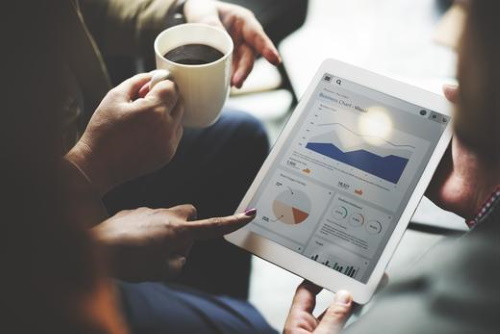What is a Business Intelligence Dashboard?

The use of dashboarding is expanding, and more businesses are turning to dashboards to improve efficiency, reduce errors, and ensure the appropriate use of resources.
Unfortunately, this has led to the creation of hundreds, if not thousands, of dashboards, and for those in project management, choosing the correct dashboard is crucial to success. Before selecting a business intelligence dashboard, project managers need to understand a few things about what it is, what it does, and how it helps an organization.
Definition of a Business Intelligence Dashboard
A business intelligence dashboard is simply a visualization of key performance indicators, metrics, and analytics for a given company. All of this information is compiled, analyzed, and simplified for viewing on one screen, which allows for faster, data-driven decision making. Information may be presented in a variety of charts, graphs, and graphics, which may include 3D images for complex operations.
Type of a Business Intelligence Dashboard
There are many different types of business intelligence dashboards. These dashboards may be organized by role, department, or executive hierarchies. As a result, a business intelligence dashboard can be further customized to account for different time periods or reporting windows. Business intelligence dashboards can further be broken down into analytical and operational dashboards.
Analytical dashboards revolve around data collection from an extended period of time. For example, an analytical dashboard may require a month’s tracking and analyzing of data. This dashboard provides insights into how future processes could be changed to achieve better results in a future monitoring period. The drawback to analytical dashboards is in that they do not allow for real-time visibility.
Operational dashboards focus on the use of KPIs and real-time data capture to allow for daily tracking of a current operation or operations. Operational dashboards are an excellent means of tracking employee performance and measuring completed work against planned work, which are vital processes in project management.
Of course, many business intelligence dashboards may combine both operational and analytical dashboards to allow for the tracking of all factors and analysis on an on-going basis.
Benefits of a Business Intelligence Dashboard
The primary benefits of a business intelligence dashboard include real-time visibility and data-driven decision making. However, business intelligence dashboards also help organizations identify inconsistencies and issues that are not apparent through traditional dashboards.
For example, a business intelligence dashboard could be used to identify how quality assurance problems arise when worker A works on projects that involve material B. Essentially, this trend may not have been realized without the intense analytics and KPIs of these dashboards.
Business intelligence dashboards are poised to dramatically change how organizations view success and productivity. By understanding what a business intelligence dashboard is, how it can be customized to fit specific needs, and how it benefits an organization, project managers and executive-level leadership can help propel their organizations into the future.
Key Takeaway
- A business intelligence dashboard uses raw data to uncover and address issues within an organization.
- Business intelligence dashboards can be customized.
- The most common forms of business intelligence dashboards include operational and analytical dashboards.
- Business intelligence dashboards increase accountability and data-driven decision making.